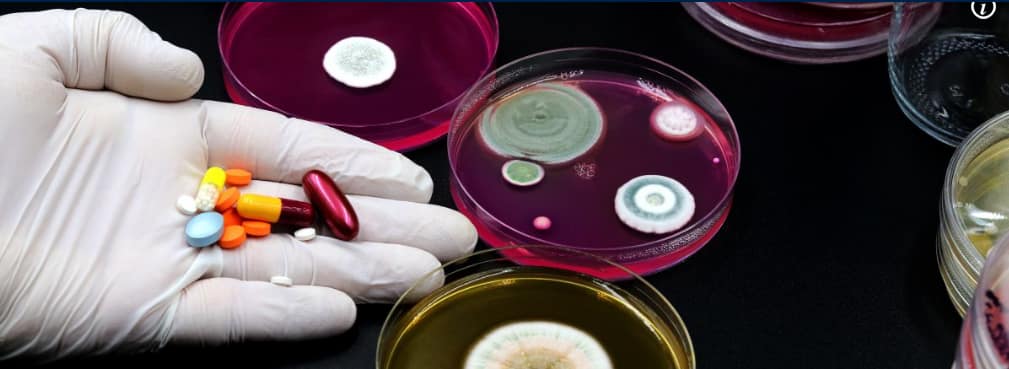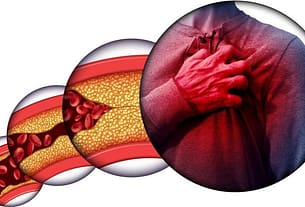Director General of Health Services, Dr. Atul Goyal has appealed in a letter to all the doctors of medical colleges to compulsorily mention the appropriate reason while prescribing antibiotics.
In our country people use antibiotics indiscriminately. Most people are unaware of the ill effects of eating it. For this reason, it is very important to know how many deaths occur in the world every year and how badly it affects our health. Now the government has started paying attention to this serious issue. Director General of Health Services, Dr. Atul Goyal has appealed in a letter to all the doctors of medical colleges to compulsorily mention the appropriate reason while prescribing antibiotics.
What is Antibiotic Resistance and Anti Microbial Resistance(AMR)
India is among the notable countries that contribute significantly to global antimicrobial resistance due to extensive antibiotic abuse, both in healthcare and agriculture.
Ever been admitted to a hospital for an injury and had tons of antibiotics injected into you for “preventing infections and speedy recovery”? Well, it turns out those could do more harm than help. Antimicrobial Resistance (AMR), which occurs when bacteria, viruses, fungi, and parasites develop resistance to antimicrobial drugs through genetic mutation, is making it harder and harder to treat infections, in turn increasing the spread and severity of illnesses.
According to WHO (World Health Organization), antimicrobial resistance (AMR) causes an estimated 5 million deaths every year globally, with projections suggesting a rise to 10 million by 2050. This escalation is due to the spread of resistant organisms, leading to ineffective treatment of infections and increased mortality.
In 2021, India alone reported 100,000 cases of antibiotic-resistant organisms. These cases spanned across various bacterial infections, indicating widespread resistance, mostly among infants, the elderly, and those with comorbidities.
Precautionary use
In India, hospitals generally lack effective mechanisms to prevent the spread of infections from one patient to the other. Hence, they rely on the widespread use of antibiotics to achieve this purpose.
“Hospitals should take a lead role in prescribing accurate antibiotic dosages, preventing cross-patient infections, and implementing stewardship for effective management,” said Dr. Dipu TS, Associate Professor, Division of Infectious Diseases, Department of Internal Medicine, Amrita Hospital, Kochi.
He urged them to implement accurate and appropriate prescription of antibiotic drugs, establish antimicrobial stewardship programs, and focus on other infection control practices to prevent the spread of infections from one person to another.
The second, and major, contributor to antibiotic resistance is agriculture. Sectors like poultry, where antimicrobials are injected into animals to resist diseases due to poor sanitation and other infectious environments, fuel antimicrobial resistance extensively. Pesticides and chemical fertilizers used during farming also lead to chemical imbalances and resistance against medicines in the bodies of people who consume the food.
Integrating the One Health concept into discussions on antimicrobial resistance (AMR) is pivotal, acknowledging the interconnectedness of human, animal, and environmental health,” said Dr R Krishna Kumar, HOD, Pediatric Cardiology, Amrita Hospital, Kochi.
On the other hand, awareness regarding antimicrobial resistance as a looming threat should also be a factor to be considered during the treatment of patients as such damage might have already been done.
“Recognizing persistent or worsening infections despite antibiotic treatment is crucial, as a lack of response may indicate AMR,” said Dr. Ranga Reddy, President, Infection Control Academy of India.
“Vigilance and appropriate treatment are essential, considering risk factors such as excessive antibiotic use, hospitalization, and chronic conditions. Treatment options are limited and require tailored antibiotic therapy based on susceptibility testing. The concept of healthy aging can be adopted by staying healthy and by vaccinating against communicable diseases,” he added.
The repercussions of AMR are especially felt during times of heightened medical complexities, such as transplants and immunosuppressive therapies that expose patients to increased infection risks.
Unless urgent action is taken, the world may run out of options to treat common infections that are now easily handled by low-cost medicines, turning many of them into life-threatening conditions.
“Strengthening surveillance systems, promoting antibiotic stewardship, investing in new antibiotic development, and fostering global collaboration are essential strategies.
WHO Fact Sheet on Anti Microbial Resistance(AMR)
- Antimicrobial resistance (AMR) is one of the top global public health and development threats. It is estimated that bacterial AMR was directly responsible for 1.27 million global deaths in 2019 and contributed to 4.95 million deaths (1).
- The misuse and overuse of antimicrobials in humans, animals and plants are the main drivers in the development of drug-resistant pathogens.
- AMR affects countries in all regions and at all income levels. Its drivers and consequences are exacerbated by poverty and inequality, and low- and middle-income countries are most affected.
- AMR puts many of the gains of modern medicine at risk. It makes infections harder to treat and makes other medical procedures and treatments – such as surgery, caesarean sections and cancer chemotherapy – much riskier.
- The world faces an antibiotics pipeline and access crisis. There is an inadequate research and development pipeline in the face of rising levels of resistance, and urgent need for additional measures to ensure equitable access to new and existing vaccines, diagnostics and medicines.
- In addition to death and disability, AMR has significant economic costs. The World Bank estimates that AMR could result in US$ 1 trillion additional healthcare costs by 2050, and US$ 1 trillion to US$ 3.4 trillion gross domestic product (GDP) losses per year by 2030 (2).
- Priorities to address AMR in human health include preventing all infections, which may result in inappropriate use of antimicrobials; ensuring universal access to quality diagnosis and appropriate treatment of infections; and strategic information and innovation, for example surveillance of AMR and antimicrobial consumption/use, and research and development for novel vaccines, diagnostics and medicines.





